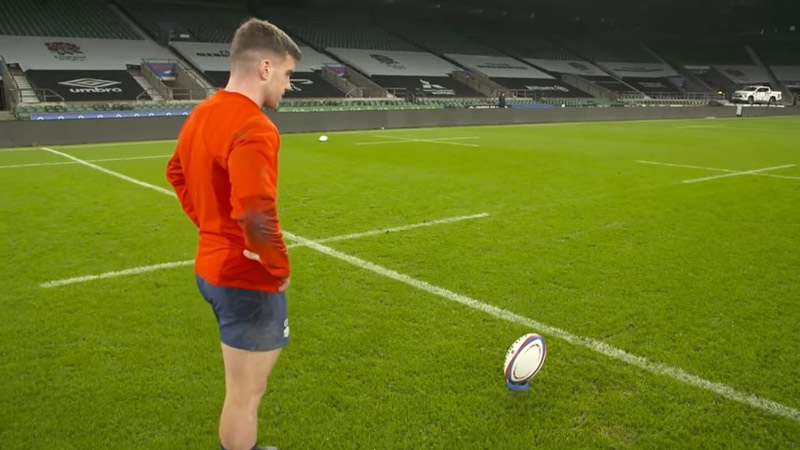Scoring is the heartbeat of any sport, and rugby is no exception. But in the world of rugby, scoring carries its own unique terminology that can leave newcomers perplexed. So, what is it called when you score in rugby?
Unlike football’s “touchdown” or soccer’s “goal,” rugby has its own distinctive term for crossing the try line and earning points.
In this exploration, we dive into the fascinating world of rugby to uncover the precise name for this exhilarating moment of achievement.
We’ll unravel the rules, the traditions, and the sheer excitement that accompanies scoring in rugby. From tries to conversions, penalties to drop goals, rugby’s scoring mechanisms are as diverse as the game itself.
Join us as we unravel the intricacies of “What is It Called When You Score in Rugby?” and gain a deeper understanding of this thrilling sport’s scoring terminology and rules.
What Is It Called When You Score in Rugby?
Unlike some other sports where the terminology is straightforward, rugby has its own unique and distinctive name for scoring. In this section, we’ll uncover the terminology, delve into the rules, and appreciate the cultural significance behind scoring in rugby.
The Iconic Term: “Try”
In rugby, when you score, it’s known as a “try.” The term might seem deceptively simple, but it carries a deep and storied history within the sport.
A try is the primary method of scoring points in rugby and signifies the act of grounding the ball with downward pressure in the opponent’s in-goal area.
How a Try Occurs
The process of scoring a try in rugby is a thrilling sequence of events that typically unfolds as follows:
Ball Advancement
The attacking team carries, passes, or kicks the ball up the field while the defending team tries to thwart their progress.
An attacking player manages to evade or overpower the defense, breaking through the opposition’s defensive line and advancing toward the opponent’s in-goal area.
Grounding the Ball
To score a try, the attacking player must reach the in-goal area, which is situated at the end of the field, and ground the ball with downward pressure. This means the ball must be pressed against the ground, ensuring full control and contact.
Celebration
Upon successfully grounding the ball, the scoring team and its supporters erupt in celebration. Scoring a try is a momentous occasion and is often met with jubilant cheers, high-fives, and sometimes elaborate try-scoring celebrations.
Point Value of a Try
A try is worth five points in rugby. While the five points alone may not seem like a lot, the significance of a try extends beyond the numerical value.
A try sets the stage for additional scoring opportunities, as it earns the team the chance to kick for additional points through a conversion kick.
A successful conversion adds two points, bringing the total value of a try and conversion to seven points.
Cultural Significance of Scoring a Try

Scoring a try in rugby is more than just an addition to the scoreboard; it’s a moment of pride, teamwork, and accomplishment. It often represents the culmination of strategic planning, individual skill, and collective effort on the part of the attacking team.
The act of grounding the ball in the in-goal area is a testament to a player’s speed, strength, and agility, as well as the support of their teammates.
Moreover, a try is not just a reflection of athleticism; it’s an expression of the spirit of rugby. The camaraderie, sportsmanship, and respect that underpin the sport are on full display when a try is scored.
Both the scoring team and their opponents acknowledge the achievement, often with handshakes, pats on the back, and words of encouragement.
Conversion Kicks: Adding Extra Points
As mentioned earlier, a successful try earns the scoring team the opportunity to attempt a conversion kick. The conversion kick is taken from a position that aligns with where the try was scored.
It’s typically attempted from a spot perpendicular to where the ball was grounded in the in-goal area. The objective of the conversion kick is to send the ball through the opponent’s uprights, similar to a field goal in American football.
If the kick is successful, the team is awarded an additional two points, bringing the total value of a try and conversion to seven points.
Other Methods of Scoring: Penalty Tries and Drop Goals
While tries are the most common method of scoring in rugby, there are a couple of other ways to earn points:
Penalty Try
In certain situations where a try-scoring opportunity is denied by the opposing team’s deliberate infringement, the referee may award a penalty try. A penalty try is worth seven points, with no conversion attempt required.
Drop Goal
A drop goal is a field goal kicked during open play. It is worth three points and can be a strategic method of scoring when a team is within range of the opponent’s goalposts.
Celebrating the Try
Rugby has a rich tradition of celebrating tries, and each try-scorer often has a unique way of acknowledging their accomplishment.
Whether it’s a simple dive over the line, a triumphant leap, or an elaborate try-scoring dance, the celebration is an integral part of the rugby experience.
Fans in the stands and watching at home also join in the celebration. The excitement and energy that fill the stadium when a try is scored are electrifying, making it one of the most memorable moments in the sport.
How Many Points Is a Kick in Rugby?
In rugby, kicks can be an integral part of a team’s strategy, and they can result in various point values, depending on the type of kick and the outcome. Let’s explore the different types of kicks in rugby and the associated point values:
Penalty Kick

A penalty kick in rugby is awarded to a team when the opposing team commits a significant rule infringement. The kicking team can choose to take a penalty kick at goal, and if successful, it is worth three points.
To execute a penalty kick, the ball is placed on a kicking tee or held by a teammate on the ground, and the kicker attempts to send it through the opponent’s uprights.
The penalty kick is an essential scoring method in rugby, often used when a team is within kicking range and wants to capitalize on a scoring opportunity. It is a way to penalize the opposing team for rule violations while adding points to the scoreboard.
Conversion Kick
A conversion kick follows a try, which is the primary method of scoring in rugby. After a try is scored and the ball is grounded in the in-goal area, the scoring team has the option to attempt a conversion kick. If successful, a conversion kick is worth two points.
The conversion kick is taken from a spot perpendicular to where the try was scored, and the objective is to send the ball through the opponent’s uprights. It adds extra points to the try, increasing the total value of a try and conversion to seven points.
Drop Goal
A drop goal is a field goal kicked during open play. It is worth three points and can be a strategic method of scoring in rugby.
To execute a drop goal, a player must drop the ball onto the ground and then kick it as it bounces back up. The ball must pass over the opponent’s crossbar and between the uprights to count as a successful drop goal.
Drop goals are often attempted when a team is under pressure, and a try-scoring opportunity is limited. It requires quick thinking and precise kicking skill, as the drop goal can be a game-changing play.
Penalty Try
A penalty try is a rare scoring event in rugby. It is awarded to a team when a try-scoring opportunity is deliberately and illegally prevented by the opposing team.
In such cases, the referee may award a penalty try, which is worth seven points. No conversion kick is required for a penalty try.
Penalty tries are significant in rugby, as they not only result in a substantial point advantage but also carry the added consequence of a yellow card (sin bin) or red card (ejection) for the offending player responsible for the illegal act that prevented the try.
Scoring with a Punt or Grubber Kick
While kicks for points are common in rugby, some kicks, such as punts and grubber kicks, are primarily used for tactical purposes rather than scoring points directly.
Punt kicks are used to gain field position by kicking the ball high and deep into the opponent’s territory, while grubber kicks are low, bouncing kicks designed to evade defenders and create opportunities for teammates to gain possession.
However, if a player executes an extraordinary long-range punt that happens to go through the opponent’s uprights, it would indeed be awarded as a drop goal and be worth three points.
FAQs
What is a Try in Rugby?
A try is the primary method of scoring in rugby. It occurs when a player carries the ball across the opponent’s goal line and grounds it with downward pressure. A try is worth five points.
How Do You Convert a Try in Rugby?
After scoring a try, the scoring team has the opportunity to attempt a conversion. A conversion is a kick at goal, taken from a spot in line with where the try was scored. If successful, it adds two extra points to the team’s score, bringing the total for the try to seven points.
What Is a Penalty Kick in Rugby?
A penalty kick is awarded to a team when the opposing team commits a serious foul. The team can choose to kick at the goal, and if successful, it earns three points. Penalty kicks are taken from the spot where the foul occurred.
What Is a Drop Goal in Rugby?
A drop goal is a way to score in open play. A player kicks the ball through the opponent’s goalposts during the run of play, without a preceding ruck or maul. It is worth three points.
How Does a Rugby Team Win a Game?
In rugby, a team can win a game by scoring more points than their opponents. Points can be accumulated through tries, conversions, penalty kicks, and drop goals. The team with the higher total score at the end of the match wins. If the scores are tied, the game can result in a draw.
Conclusion
In the realm of rugby, scoring is not just about putting points on the board; it’s about crossing the legendary “try line.” This distinctive term embodies the spirit and history of the sport.
Scoring in rugby is not merely about achieving numerical success; it’s about the physicality, teamwork, and determination it takes to reach the try line.
From the thrilling sight of a player breaking through the opposition’s defense to the deafening cheers of the crowd, scoring in rugby is a moment of pure exhilaration. It represents the culmination of strategy, skill, and sheer effort on the field.
So, the next time you watch a rugby match and witness a player touching down the ball beyond the try line, remember that it’s not just a score; it’s a “try.” It’s a testament to the heart and soul of the game, where each point earned is a hard-fought victory.







